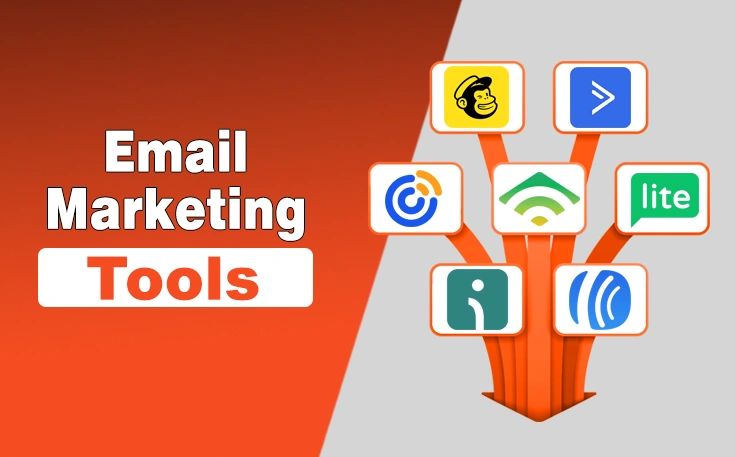Every day, government agencies across the world face a relentless wave of cyberattacks, and more often than not, those attacks begin with a single email. If you work in a government office or manage digital security for a public sector body, you have likely heard of DMARC. But do you really know why it is essential or how to implement it effectively?
As you implement DMARC, analyze domain health, and ensure regulatory compliance, you are less likely to fall victim to a cyberattack. In this guide, I will break down what DMARC is, why it matters so much for government operations, and how your agency can adopt it without hitting roadblocks. Let’s get right into it.
What Is DMARC?
DMARC is a key technical standard. It helps protect email senders and recipients from email-based cyberthreats.
- DMARC builds upon SPF and DKIM to check whether an email is from a legitimate domain.
- It helps control what happens to an email that does not pass authentication tests.
- DMARC also offers reporting mechanisms to help domain owners detect potential spoofing attempts.
The main benefit of setting up DMARC is that only authorized senders will now be able to use the .gov domain. This will prevent hackers from conducting spoofing on behalf of a governmental domain.
What Government Information Is At Risk?
Governmental communications include a wide range of data related, but not limited to:
- Taxes and subsidies
- Elections and voting details
- Public health information
- Coordination of emergency situations
- Government permits
- Intelligence sharing
- Government budget and funds allocation
- State and international grants
- Diplomatic communications
What Are the Risks of a Lack of Email Security?
Email is an indispensable part of state operations. Private sector organizations often use other channels to exchange information internally. Such channels may include Discord, Rocket.Chat, Mattermost, and many others. Governmental entities, however, are often limited to email for internal and external communications.
The .gov address immediately sparks a sense of officialness and reliability. The recipients often feel safe to open an email that comes from that address. As recipients don’t think twice before opening an email from a government domain, hackers find it very useful to spoof .gov domains. They can share any malicious links and content in the emails, and the recipients will fall prey even before they realize it.
So, a government email infrastructure with no DMARC is like an open, unprotected border with the enemy. There is no army in place, so the enemy can invade at any time it wants.
National Security
Malicious actors from other countries can access your communications and gather intelligence information. This can be extremely dangerous in times of war. The secret data can be used to exploit your security gaps and attack important infrastructure systems.
Reputational Damage
It’s very easy to lose public trust when an email from a .gov address turns out to be a scam. When it comes to the reputation of a government, it’s quite hard to restore it once it’s lost.
Sensitive Citizen Data Leaks
If social security numbers or public health records fall into the hands of hackers, this may turn into a real catastrophe for your country. Not only will this jeopardize your chances of winning the next election, but it will also make your citizens an easy prime target for the enemy.
Financial Harm
Cyberattacks are quite expensive. You need to invest significant money, human resources, and time into investigating the attack. You also need to restore your systems and operations and arrange the legal settlements. Not to mention the direct financial losses that may arise if hackers manage to access sensitive financial data and bank accounts.
Compliance Problems
Inadequate email security can result in violations of various regulations. These may range from state data protection laws to international privacy standards, such as:
The Bulk Sender Requirement
Major email providers now require bulk senders to have DMARC (with at least p=none) in place and to align authentication records. Not meeting these requirements can result in email delivery failures or rejections.
BOD 18-01
The Department of Homeland Security has set a firm mandate. All federal civilian domains must implement DMARC at the enforcement level (p=reject). There are no exceptions—this is about more than just monitoring; it’s about proactively blocking malicious email activity.
Recent White House cybersecurity directives have further emphasized the importance of email security. DMARC for Gmail and other email providers is now an essential component of zero-trust architecture. Agencies are required to demonstrate that they are not simply monitoring. Instead, they should be actively safeguarding their email domains.
State Cybersecurity Frameworks
It is now mandatory for state bodies to have some level of email authentication in place. Many cyberinsurance providers now require DMARC enforcement before they will cover governmental entities.
require DMARC enforcement before they will cover governmental entities.
So, Why Do Some Government Entities Still Not Implement DMARC?
DMARC implementation is important for the government sector. But it is also challenging, with some sector-specific nuances and constraints.
- Lengthy Budget Approval Processes: Managing the government budget is not an easy task. Getting funding for processes like DMARC implementation often comes with complicated bureaucratic processes. Fiscal year limitations are another key constraint.
- Outdated Systems: Many of the modern-day governmental agencies still have old and outdated email systems. These often don’t align with the contemporary email authentication standards.
- Too Many Contractors: A governmental agency often has to deal with hundreds of contractors that send emails on that agency’s behalf. It is relatively easy to ensure DMARC alignment when you deal with one or two contractors. However, it gets more and more complicated as the number of contractors increases.
- Too Many Departments: Most often, there is more than one department within a governmental agency, and each has its unique email infrastructure. Ensuring a uniform approach across all departments may be challenging.
- Compliance Complexity: BOD 18-01, state regulations, and multiple security frameworks are in play. So, determining which requirements are relevant to your agency can be confusing.
DMARC Implementation Tips
Thankfully, all of the above difficulties and challenges can be easily overcome. All you need is professional support and a well-thought-out strategy.
Here are some useful tips to help you start your DMARC implementation journey as a government agency:
- Conduct a Domain Audit: A quick domain analysis will provide you with crucial information about your domain’s health and needs.
- Start with p=none: Don’t directly jump to strict DMARC enforcement. This might negatively impact your email deliverability and operations. Instead, start from the monitor mode (i.e., p=none). Gradually transition to stricter modes when you have identified all the legitimate senders on your behalf.
- Ensure Detailed Documentation: Document your DMARC configuration thoroughly. So when your IT specialist leaves you, your organization retains critical security information.
- Monitor Regularly: You’re not yet done with DMARC when you configure it; you also need to monitor it to detect any suspicious activity before it’s too late.
- Utilize Hosted Services: What if you’re not willing or able to do these things by yourself? Well, you can always make use of hosted DMARC services like those provided by PowerDMARC. Such services take care of everything DMARC-related, from configuration to enforcement. This will ensure you enjoy both peace of mind and safety at once.
Summing Up
What makes government email security a must is that such state agencies don’t operate as standalone bodies. They are often interconnected with several other private and international organizations. So, any compromised email domain can jeopardize the email infrastructures of involved stakeholders.
So, are you a government agency that cares about its citizens, partners, and contractors? Ensure you have DMARC in place!
There are some sector-specific challenges to DMARC implementation for government agencies. However, there are also tailored solutions to help you navigate the journey as smoothly as possible.
People Also Ask
Why are government domains a favorite target among attackers?
Government domains are a prime target for two primary reasons. Firstly, governmental agencies deal with an extensive amount of sensitive information. Secondly, recipients trust information received from a .gov domain.
What information can be accessed during a cyberattack involving a government domain?
Tax information, election data, and public health details are just some of the targets that may be at risk.
What may happen if a government agency doesn’t have DMARC in place?
Potential consequences include reputational damage, national security risks, citizen data leaks, etc.
Why don’t all government agencies put in place DMARC?
DMARC implementation poses some unique challenges for the government sector in particular. These include a lack of expertise, outdated security infrastructures, and lengthy budget approvals. Having to deal with too many contractors and departments at once is another constraint.
How can these challenges be overcome?
Hosted DMARC services can help you overcome many of the DMARC implementation challenges.
Need custom app with amazing features?
Get a Quote




